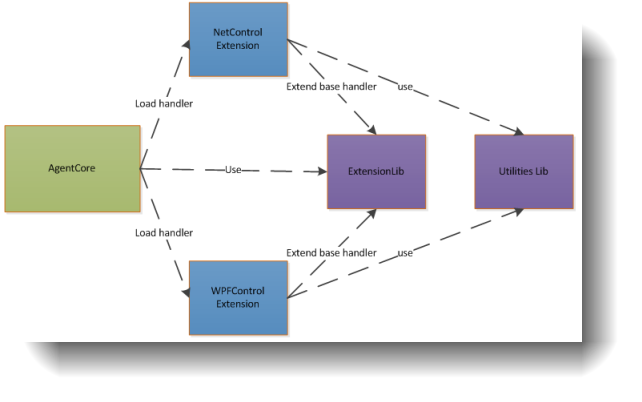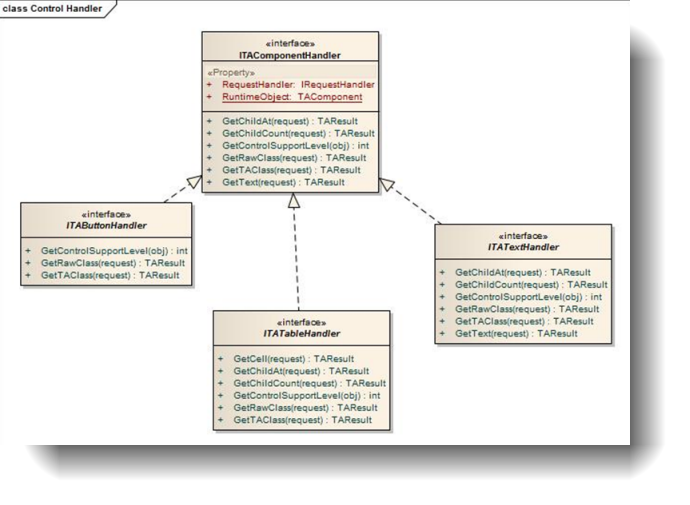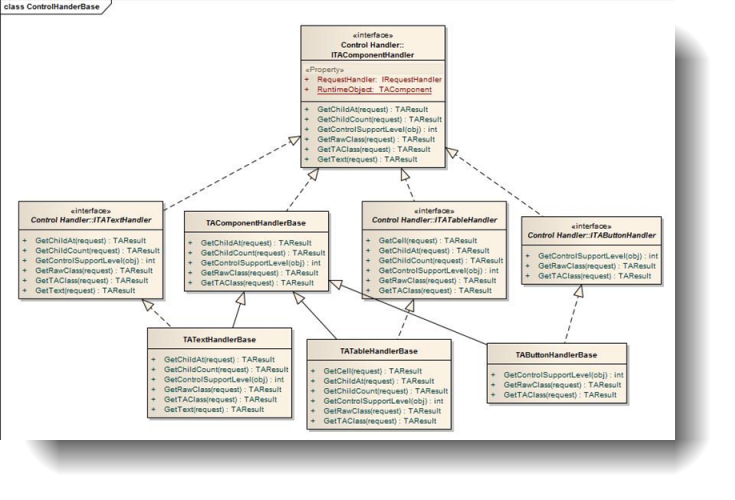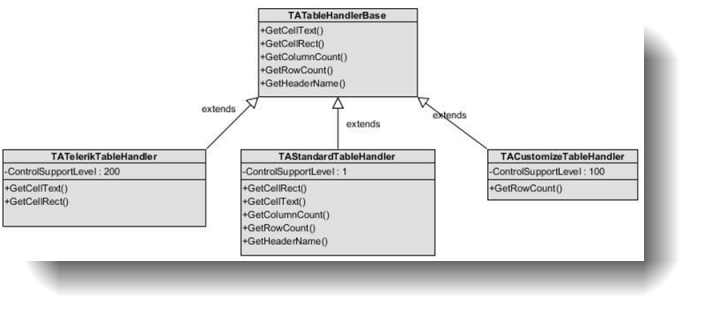WPF Extensibility overview
WPF Agent is loaded inside the AUT process when the physical layer needs to obtain information on the running AUT’s controls by the hooking technique.
Components
WPF agent is divided into three components as follows:
- Agent core: This is main part of the WPF Extension. Its tasks are to:
- manage controls cache,
- manage all extensions and load extension handlers,
- communicate with TAPM, and
- receive requests from TAPM and pass it to a handler which has the responsibility to process and return result.
- Library:
- ExtensionLib contains the interfaces and abstract classes which are implemented on the extension side, such as ITAControlHandler and TAComponentHandlerBase.
- UtilitiesLib library exports classes which are able to be reused by extensions. For instance, WPF reflection lib.
- Extensions: Sets of handlers which support a type of control or overwrite the behavior of available handlers such as WPF Control Support.

The Extension Library
It contains interfaces and abstract classes which are implemented on the extension side.
- Control Handler interface: Each interface defines a set of method which supports a type of TestArchitect’s control. For instance:
ITATableHandler supports the table control.
ITAListHandler supports the list box control, etc.

GetControlSupportLevel(Object autObject) method:
- This is key method for each handler and it must be implemented if you want to overwrite the handler for a specific control.
- The Agent core passes the AUT runtime object to each handler through this method, and then obtains an integer number; this integer number presents the prioritized level of the handler - larger prioritized number has higher priority.
Control Handler Base:

This is a set of abstract classes without implementing the GetControlSupportLevel method.
Each control base handler implements a handler interface as a distributor. For each method, the base handler will find concrete handler instance which is best for implementing this method and recalling it.
For example: Assume that there are handlers supporting TelerikTable control as follows:

The figure above illustrates that the TATelerikTableHandler class does not implement the GetColumnCount method, so TATelerikTableHandler::GetColumnCount is TATableHandlerBase::GetColumnCount. On the TATableHandlerBase side, it will use the best handler (TAStandardTableHandler for the above case) to support this method.
We have the following flow code:

